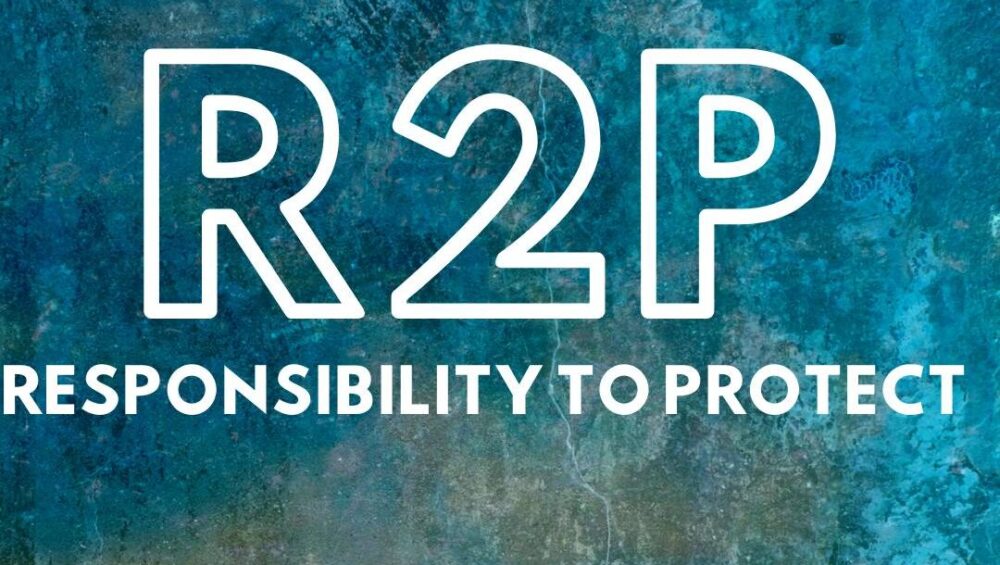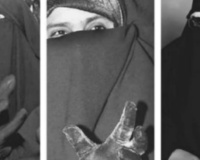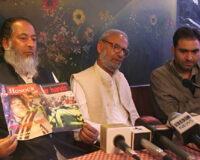The 73 years of military occupation of the UN recognised disputed territory of Kashmir, makes it one of the longest military occupations of modern history.
According to Geneva Academy’s project, Rule of Law in Armed Conflicts (RULAC) –– which monitors more than 80-armed conflicts involving at least 55 State and more than 70 armed Non-State actors –– “The disputed status of Kashmir has been a source of conflict between India and Pakistan since the first Indo-Pakistan war in 1947, with a devastating impact on the civilian population.”
It was the first of four wars that was fought between the two newly created states over the Muslim majority Kashmir that was supposed to join Pakistan by virtue of the partition of British India.
Several human rights organisations report that thousands of civilians have been killed by Indian state in the conflict, since 1989. There are recorded cases of torture, enforced disappearances, rape, arbitrary detentions and the use of lethal weapons on civilians, along with media censorship and attacks on journalists. It is these crimes that gave a rise to locally revered indigenous armed movement in Indian Occupied Jammu and Kashmir (IOJK) resisting Indian rule.
Human Right Violation Dossier - 2021
The Government of Pakistan has launched a comprehensive dossier titled, ‘Human rights violation 2021 in IOJK’, exposing the scale of mass atrocity crimes perpetrated by the Indian Occupying force in the disputed territory. The dossier comes three years after India unilaterally abrogated the status of the region by calming it to be it’s ‘integral part’.
The dossier consists of three chapters; war crimes, false flag operations, and United Nations Security Council’s (UNSC) resolutions and India’s attempts to change the demographic status of occupied Kashmir.
The report exposes 3,432 cases of war crimes in which 1,178 Indian troops have been found to be perpetrators, including one Major General, four Inspector Generals, seven Deputy Inspector Generals, five Brigadiers, 31 Colonels and 188 Majors and Captains. Since 1989, over 96,000 extra-judicial killings, around 162,000 cases of arbitrary arrests, over 25,000 pellet gun injuries and tortures were recorded. Moreover, 11,250 women were raped, around 23,000 widowed and over 108,000 children orphaned. The report further provides details of 8,652 unmarked graves that have been identified in 89 locations of IOJK.

Responsibility to Protect - R2P
Among the casualties — with far-reaching implications for other bloody conflicts around the world — are a number of international norms that were supposed to limit the suffering of civilian populations.
The doctrine of “responsibility to protect.” Often abbreviated as R2P, holds that the international community does not just have a right but also an obligation to intervene in conflicts where atrocities are committed against civilian populations.
In its 65th session of the UN General Assembly, the largest gathering of the heads of the states, which included Manmohan Singh of former Prime Minister of India and Mian Samroo, the then Chairman of the Senate of Pakistan, made an epoch declaration and established the international norm to halt the massive atrocities as a collective responsibility of nations. It called for timely and decisive collective UNSC action when-national authorities manifestly fail to protect its populations from aforesaid crimes.
Three-tier process under R2P
The ambit under which the R2P can be invoked explicitly includes humanitarian crisis resulting from genocide, war crimes, ethnic cleansing, and crimes against humanity.
R2P requires a three-tire process involving: the responsibility of each State to protect its populations; the responsibility of the international community to assist States in protecting their populations; and the responsibility of the international community to protect when a State is manifestly failing to protect its populations.
If a state is manifestly failing to protect its populations, the international community must be prepared to take appropriate collective action, in a timely and decisive manner and in accordance with the UN Charter.
R2P’s applicability to Occupied Kashmir
There is a difference in opinion presented by International Law experts over the applicability of R2P in occupied territories or the conflicts categorised as International Armed Conflict. According to them, the applicability of the doctrine is available to intra-state conflicts.
While discussing the conflict situation in Palestine’s Gaza, Megan Schmidt, Senior Program Officer at the International Coalition for the Responsibility to Protect (ICRtoP), explains that “the question of Gaza’s standing as either an occupied or independent entity” is “central to understanding R2P’s applicability in this present crisis”. Schmidt further argues that, should one consider that Israel’s unilateral disengagement from Gaza in 2005 ended its occupation of the territory, and that the conflict opposing Israel to the Palestinians from Gaza is of international nature, “R2P would not be applicable for the protection of civilians across borders in the crisis.” In such a case, International Humanitarian Law (IHL) would be the only body of law applicable. This is strange argument, she adds.
Firstly, one should recall that far from being disconnected from IHL and existing International Law, the R2P doctrine essentially reinforces already existing norms. While war crimes are violations of IHL, they are also Atrocity Crimes covered by R2P. The same is the case pursuant to Crime of genocide: genocide does not only come within the ambit of Mass Atrocity Crimes invoking R2P, it is also prohibited by the, Genocide Convention 1948 and is widely considered to have attained ‘Jus Cogen’ norm under International law – the equivalent of “super” norms of customary international law that do not allow for any derogation. Besides the contention of R2P being inapplicable, given the international character of the conflict, sounds bit confusion. While recalling the concept of R2P it was born out of a concern to better protect populations against the heinous crimes, even if committed within the borders of a country. Does the argument international conflict mean that genocide, war crimes, ethnic cleansing, or crimes against humanity do not trigger R2P when occurring during a conflict that might be categorized as “international”? Only absurdity can rely on such arguments.
The general consensus universally pursuant to R2P has been on the fact that whenever mass atrocities occur, whatever the context, something should be done to protect populations. Furthermore, the doctrine justifies various forms of international interventions if the state(s) in charge is (are) not able or not willing to protect the threatened populations.
Questioning the applicability of R2P in occupied territories like Kashmir and Gaza because the conflict is international rather than national seems to cynically distort R2P’s spirit under the pretext of legal orthodoxy.
“There should be no question about whether R2P ‘applies’ or not. In fact, posing that very question mistakes what States agreed about R2P in 2005. R2P is not conditional… it applies everywhere, all the time.” Professor Alex Bellamy, Director of the Asia Pacific Centre for the Responsibility to Protect writes in context of Gaza.
R2P in Indian Occupied Kashmir: Impractical or reality?
In the context of R2P, the biggest concern in South Asia since 1947 is the prolonged conflict of Kashmir. Civilian population living in disputed Jammu and Kashmir without basic human rights prevails under the shadow of anarchy. The recent onslaught on the semi-autonomous status on August 5th of 2019 has escalated state violence against Kashmiris which itself requires humanitarian assistance. Genocide Watch, a global organisation working for the prevention of genocide, has issued two warning alerts for India — one for the occupied territory of Kashmir and the other for Assam state.
According to UN ‘Genocide Watch’, warning is declared by the NGO when there are signs of the early stages of a genocide in progress:
“The most recent genocide alert issued by the organisation was for occupied Kashmir, in which it identified the genocidal process, based on Dr. Stanton’s 10 Stages of Genocide, to be far advanced.”
While the doctrine of R2P insists on the fact that the primary responsibility for the protection of populations from mass atrocities lies with the state in charge, it is also built upon the acknowledgement that states do, at times, fail to exercise this responsibility. It is in those cases that other actors, acting as part of the ‘international community’, will step in. Again it would be appropriate to quote the argument of Professor Alex, he says, states and international organizations may do so in various ways: exerting diplomatic or political pressure on the State(s) in charge to stop exactions and push for a peaceful resolution of the conflict, contributing to capacity-building and humanitarian activities…
A particular responsibility is considered to rest upon the United Nations, and in particular the Security Council, as embodiments of the so-called “international community”.
It seems that non-state actors have a role to play, most particularly when both the State(s) in charge and the UN Security Council are unable or unwilling to take actions to protect a population against the most serious international crimes. As UN Secretary General reminds us on various occasions that the prevention of genocide is both a collective and individuals responsibility. The same is certainly true of the other R2P crimes.
One could easily think that R2P will be as useless as other international norms or discourses to end the impunity with which powerful international actors might sometimes breach the most fundamental rules. But as Professor Lisa Hajjar analyses in her publication titled ‘Is Gaza Still Occupied and Why Does It Matter?’ she enunciates:
“For stateless people, including those living under occupation, international law is exceptionally important because they have no national law-based alternative to assert, let alone exercise, their right of self-determination. International law provides the point of reference for that and all the other rights they can claim by virtue of being humans.”
The averment made by Professor Lisa precisely tells us what R2P is all about: Protecting civilian population from atrocity crimes living without accessibility to any other form of protection. Therefore, the doctrine matters.






